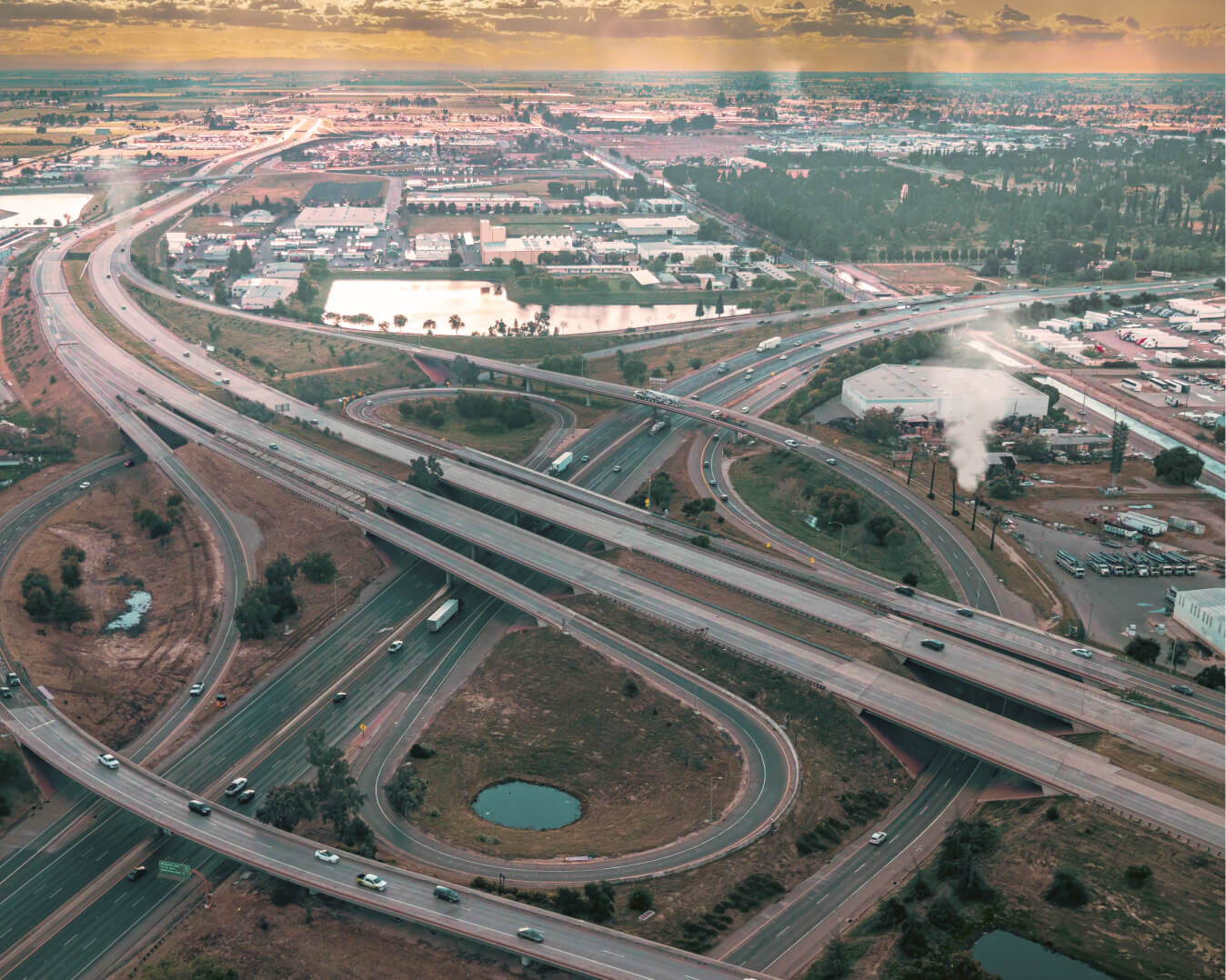The Right to Breathe Is Under Attack — This is How We’re Fighting Back

As 2025 comes to a close, I find myself – as an environmental justice advocate – reflecting on the harsh reality this year brought. Our collective right to clean air, along with the huge, hard-won wins advocates fought for on behalf of all people – but especially historically disadvantaged and low-income communities – were viciously attacked before our very eyes.
The Trump administration has made it unmistakably clear that clean air, public health, and climate progress for the sake of protecting people and the planet, are no longer priorities for the federal government. Instead, it launched an aggressive campaign to dismantle safeguards on pollution that protect our most basic right: the right to breathe.
Two of the most consequential safeguards against deadly pollution targeted by this administration were cleaner vehicle standards – granted through waivers to California through the Clean Air Act – and the U.S. EPA’s Endangerment Finding.
For those who need a quick review, here’s a short, non-exhaustive timeline of what we’ve seen so far:

Let’s unpack what these moves mean, and what The Greenlining Institute and clean air advocates are doing to fight back.
The Problem With Rolling Back Pollution Safeguards
California’s Clean Vehicle Waivers
With gas-powered vehicles remaining one of the largest sources of greenhouse gas emissions and toxic air pollution in the United States, cleaner vehicle standards are one of the strongest policy tools we have to protect public health. But throughout 2025, those very tools came under direct attack.
The Trump administration’s executive decree, “Protecting American Energy From State Overreach” kicked off efforts to protect and prop up “traditional energy producers,” namely oil, natural gas, coal, and others — using taxpayer dollars. The administration readied their arms to undermine people-focused climate justice policy at the state level, with California, New York, and Vermont named as key targets.
This administration’s agenda is deadly. Scientists have told us all for decades our country must transition from its reliance on planet-warming fossil fuels, and focus on solutions that cut climate pollution, and protect human health.
Right in line with the Trump administration’s agenda, Republicans used the Congressional Review Act, or CRA, to target federal waivers that allowed California to uphold cleaner emissions standards in the state: Advanced Clean Trucks, Heavy-Duty Low NOx, and Advanced Clean Cars II. These standards limit tailpipe emissions of pollutants like nitrogen oxides (NOx), volatile organic compounds (VOCs), particulate matter (PM2.5 and PM10), and countless other toxic air contaminants that accumulate and devastate respiratory and cardiovascular health.
Greenlining fiercely opposed this move, and signed onto a national letter to Members of Congress urging them to vote no on attacking clean air and public health. However, Congress moved forward, voting to revoke California’s waivers and ultimately slow the state’s transition to cleaner, less toxic transportation options.
California has long relied on the Clean Air Act to set stronger tailpipe and heavy-duty truck standards, and to drive a major shift toward zero emission vehicles and low-NOₓ engines. Revoking those waivers threatens to undermine the state’s clean car and truck roadmap and jeopardize air-quality gains in places like the South Coast and Central Valley — regions already heavily burdened with serious diesel-truck pollution and oxidative smog.
For disadvantaged and frontline communities – typically communities of color or low-income communities near ports, railyards, truck-intensive freight zones – this reversal could mean decades more of continued exposure to harmful emissions like NOₓ and diesel particulate matter that lead to asthma, cardiovascular disease, cancer and other health burdens. Fossil-fuel dependency is costly, and people pay with their lives.
The federal attack on California mandates removes or delays tools that would deliver cleaner fleets, jobs, and infrastructure in neighborhoods that would benefit from them most, further eroding environmental justice commitments advocates have fought for. Meanwhile, if California’s regulatory authority is weakened, the state may have to spend more resources defending litigation and re-crafting policy, diverting resources away from direct community investment.
At Greenlining, we are grateful to the California policymakers who, during the CRA vote, understood the gravity and horror of stripping clean air protections from communities across the state, and across the nation. However, we are deeply disappointed in the eleven California representatives who voted to reverse the waivers. These waivers benefit all Californians — everyone who breathes air, regardless of race or economic status.
Maintaining these waivers could have been a critical step towards improving economic, environmental, and health conditions across the state, and by striking them down, the California representatives who voted to reverse these clean vehicle standards have shirked their most basic obligation to their constituents.
Clearing the Path for More Pollution: The EPA’s Endangerment Finding
For this administration, striking down clean vehicle regulations wasn’t enough. Its next target was the legal foundation of greenhouse gas regulation: the EPA’s Endangerment Finding.
The EPA’s Endangerment Finding recognizes that greenhouse gases are harmful to both people and the environment. The science-based finding acknowledges that greenhouse gases emitted from vehicles and other sources are air pollutants because the gases accumulate in the atmosphere and cause climate-induced impacts that harm human livelihood. The finding is the legal basis for national and state protections aimed at reducing greenhouse gas emissions – usually from burning fossil fuels – and safeguarding public health from pollution.
Over the summer, EPA administrator Lee Zeldin – appointed by the Trump administration – proposed repealing the finding, representing a significant attack on longstanding environmental regulations, including those on vehicle emissions. The EPA announced it would “reconsider” the finding in a dangerous and short-sighted move that shocked the scientific community and environmental advocates. If finalized, the proposal would halt federal action to clean up vehicle and industry emissions, undermining decades of progress in protecting people from transportation emissions.
In a response letter to the EPA, Greenlining expressed our outrage.
We echo former California Air Resources Board chair Liane Randolph’s sentiments:
“The EPA’s proposal is a stunningly sloppy and amateurish effort to sow doubt where there is no doubt. EPA cannot simply repeal its own standards based on a political whim. The agency owes the American people straight, honest answers why it is proposing to carelessly risk their health, lives and property.”
Greenlining’s letter highlights the fact that Zeldin’s move to disregard science and the lived experience of impacted communities is reckless, and will leave the United States in the toxic dust of the past. According to the EPA’s own research, communities of color are more likely to carry the life-threatening consequences of climate change.
During the public comment hearing in August, hundreds spoke out in opposition to Zeldin’s proposal, with thousands more submitting written comments online emphasizing why this action would have devastating repercussions on people across the country. During the hearing California Attorney General Rob Bonta shared:
“Despite what EPA says in this proposal, the technologies necessary to reduce greenhouse gas emissions from new motor vehicles exist and are already in use in the market today…Just as the U.S. led the world in creating the climate problem, we can now use our scientific and technological edge to lead the world in solving it…This federal administration continues to attack climate science and environmental protection, but California will not stand down. California is committed to combating the climate crisis, we must all do our part.”
What now?
This movement to protect California’s wins must focus on environmental justice and center people, as much as the environment, just as grassroot organizations have been doing for years.
And as much as there is bad news, there is good news:
Still, there is no doubt that policymakers and advocates must do more to protect our communities’ right to breathe clean air.
As we move into 2026, here’s what Greenlining’s transportation equity team will center our advocacy efforts on:
- Equitable, community-driven solutions
We will prioritize the Community Air Protection Program and elevate the community-identified strategies to monitor and improve air quality from transportation-sources that put data and decision-making power directly into the hands of those most affected by air pollution.
We’ll also continue coordinated advocacy alongside our partners at the Ports of Long Beach and Los Angeles to demand stronger accountability and cleaner operations in freight corridors that impact frontline neighborhoods.
- Ambitious, progressive state agency action
We stand with the vision articulated by former CARB Chair Liane Randolph, and we call on the new Chair, Lauren Sanchez, to expand this legacy using every tool at CARB’s disposal to protect disadvantaged communities and cut climate pollution. This includes ensuring that funding for zero-emission solutions is prioritized over methane-burning routes. CARB’s community mobility and heavy-duty vehicle initiatives, and other transportation electrification efforts, must receive sustained investment to keep California progressing towards a healthy future.
State agencies must continue to be creative and look towards well-funded streams that may not be pushing California towards our equitable climate goals – particularly harmful highway expansion projects. Programs such as California’s Trade Corridor Enhancement Program, which historically has funded expansions bringing disadvantaged communities closer to freight traffic and deadly pollution, should look to increase funding to zero emission freight projects.
Achieving these goals also requires funding administrators to better align statewide and regional clean vehicle funding programs. This includes incentive programs administered by state agencies, regional air districts, California ports, and investor-owned utilities.
State and local governments must model progressive action, following the lead of cities like Oakland with their school and airport bus electrification projects, which demonstrate how coordinated public investment can drive transformative change. And with the passage of AB 39 The Local Electrification Planning Act, the time is now for state and local governments to prioritize electrifying government fleet vehicles, and expanding local zero-emission vehicle infrastructure and jobs.
- Pushing for better private investment
At the same time, the private sector must play its part. Companies should make meaningful steps to invest in zero-emission fleet transitions and take advantage of CARB’s Cal Fleet Advisor program to gain insight on how to approach installing charging infrastructure, securing incentives, and making zero-emission operations work for their business. Equitable Outcomes for a Just Transportation Future includes small ways fleet owners can get started.
- Pushing for accountability from state leaders
We encourage all California residents to contact their district representatives to discuss the alarming federal assaults on clean air and environmental justice, and express the need to consistently fund clean vehicle programs and protect healthy vehicle standards.
Finally, we urge legislators to hold their colleagues accountable to advancing policies that deliver tangible air quality, health, and economic benefits to all Californians — especially to those living in communities that have borne the brunt of pollution for far too long.
Driving Forward
The stakes are high, but so is our commitment to a safer, more sustainable future for our communities. California’s clean air future depends on bold action, unwavering advocacy, and a commitment to protecting the people who have been harmed for generations. The work continues — and we’re not backing down.










